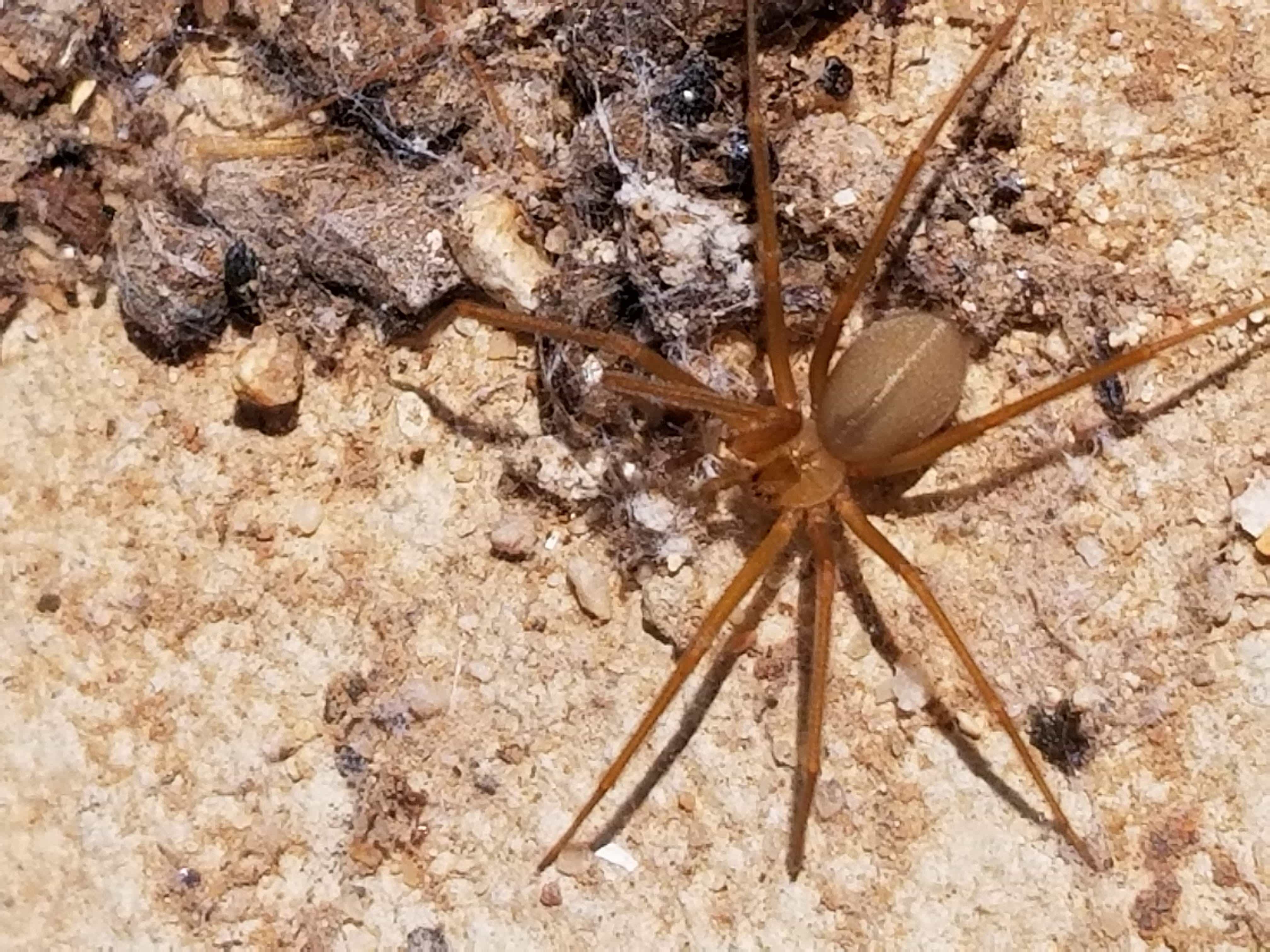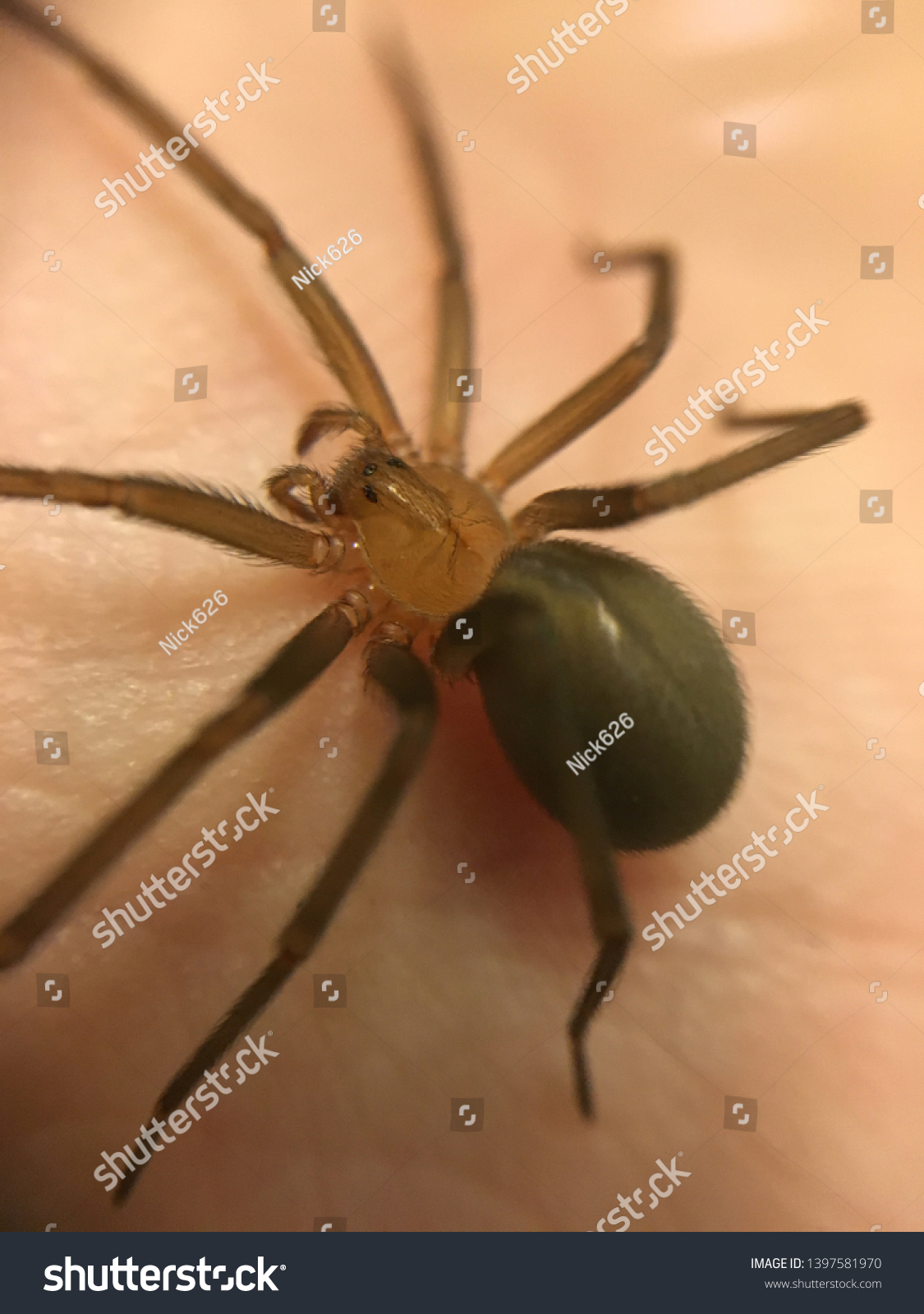
Araña de Rincón (Loxosceles laeta) EcoRegistros
Recluse spider populations can grow to hundreds or thousands in a single structure such as a house in Kansas (USA) where 2,055 L. reclusa spiders were collected in a 6-month period and in a Chilean study where 29 % of the inspected homes had Loxosceles spiders; the five most densely infested homes yielded an average of 163 L. laeta specimens .
LA ANIMALOPEDIA ARAÑA VIOLINISTA (LOXOSCELES LAETA)
Taxon details Family: Sicariidae / Genus: Loxosceles Loxosceles laeta (Nicolet, 1849) Rank: Species Status: accepted Described: Last updated: 2023-07-03 LSID: [urn:lsid:nmbe.ch:spidersp:002708] Distribution: South America. Introduced to USA, Finland, Australia External Resources *: GBIF araneae - Spiders of Europe Type deposit: provide information

Araña de Rincón (Loxosceles laeta) EcoRegistros
In synonymy: Loxosceles alicea Gertsch, 1967 = Loxosceles rufescens (Dufour, 1820) (Zamani, Mirshamsi & Marusik, 2021: 673). Loxosceles bicolor (Holmberg, 1876, removed from S of L. rufipes) = Loxosceles laeta (Nicolet, 1849) (Gertsch, 1967a: 149). Loxosceles bolivari Gertsch, 1958 = Loxosceles devia Gertsch & Mulaik, 1940 (Gertsch & Ennik, 1983: 289).

Araña de rincon en Full HD (loxosceles laeta) YouTube
The Chilean Recluse Spider, also known by its scientific name Loxosceles laeta is an extremely dangerous and somewhat common spider. While the entire recluse family of spiders is known to be dangerous, this particular species is among the most venomous. Not a spider to be messed with!

Spider Photographed Araneae Loxosceles Laeta Salticidae Stock Photo 2252675585 Shutterstock
Chilean Recluse Spiders ( Loxosceles laeta) are highly venomous spiders of the family Loxosceles. This type of spider is native to South America and lives in a wide range across several South American countries. The Chilean Recluse Spider is extremely dangerous and is one of the most venomous of all recluse spiders.

Araña de Rincón (Loxosceles laeta) EcoRegistros
Loxoscelism is a term reserved for reactions to bites of the brown recluse spider and members of that same genus ( Fig. 14.11 ). Brown recluse spiders are normally found outdoors—under rocks, cliffs, and areas that afford protection—but this spider readily adapts to indoor habitats as well.

Loxosceles Laeta Spider Violinist Stock Photo 398648986 Shutterstock
Araneae - Spiders of Europe. An identification tool to European spiders with species descriptions, scientific drawings, distributions and other species related informations. Loxosceles laeta (Nicolet, 1849) WSC LSID urn:lsid:nmbe.ch:. Ennik F (1983) The spider genus Loxosceles in North America, Central America, and the West Indies.

Argentina nativa Araña de los rincones (Loxosceles laeta)
The recluse spiders ( Loxosceles ( / lɒkˈsɒsɪliːz / ), also known as brown spiders, fiddle-backs, violin spiders, and reapers, is a genus of spiders that was first described by R. T. Lowe in 1832. [4] They are venomous spiders known for their bite, which sometimes produces a characteristic set of symptoms known as loxoscelism .

Picture spider (Loxosceles laeta) hung and highlighted on a white background. Lima Peru Stock
The common name "brown recluse spider" refers to one species of spider, Loxosceles reclusa,. Finally, in Chile where L. laeta is native, a spider census turned up an average of 163 live violin spiders living in the 5 most infested homes (range 106 to 222 spiders). And no one living in those houses had ever shown evidence of a recluse bite.

One species a day A new recluse spider Loxosceles guajira
Size: These spiders have a length of about 7 to 12 mm (0.27 to 0.47 inches). Color: Most species of the recluse family have a dark brown body, while the color ranges may vary from white, blackish gray, or dark brown. Other characteristics: Most of them possess six eyes arranged in groups of three.
Gran Canaria Subterránea Las arañas violín (Loxosceles) de Canarias son endémicas
Paulo L Ho & Denise V Tambourgi BMC Genomics 9, Article number: 279 ( 2008 ) Cite this article 8268 Accesses 107 Citations Metrics Abstract Background The bite of spiders belonging to the genus Loxosceles can induce a variety of clinical symptoms, including dermonecrosis, thrombosis, vascular leakage, haemolysis, and persistent inflammation.

ArchivoBrown recluse spider, Loxosceles reclusa.jpg Wikipedia, la enciclopedia libre
The Chilean recluse spider, Loxosceles laeta, is a highly venomous spider of the family Sicariidae. It usually hides in cracks and corners that are difficult to access, hence its name. It is considered the most dangerous of the spiders of the genus Loxosceles, since its bite frequently produces severe systemic reactions and even death.

CalPhotos Loxoceles laeta; Chilean Recluse Spider
Abstract. The locomotor activity of the Chilean recluse spider Loxosceles laeta (Nicolet, 1849), and the spitting spider, Scytodes globula Nicolet, 1849, were studied in the laboratory under controlled conditions (LD 12:12). In Chile, these are two common synanthropic spiders which share a microhabitat and show extensive thermal niche overlap.

Loxosceles (Recluse Spiders) in Tucson, Arizona United States
But for more than 50 years, it has also been home to a thriving population of the Chilean recluse spider ( Loxosceles laeta ), widely considered to be the most venomous of its kind. And no.

Holding Brown Recluse Spider Loxosceles Laeta库存照片1397581970 Shutterstock
The Chilean recluse spider is a venomous spider, Loxosceles laeta, of the family Sicariidae (formerly of the family Loxoscelidae). In Spanish, it (and other South American recluse spiders) is known as araña de rincón, or 'corner spider'; in Portuguese, as aranha-marrom or 'brown spider'.

Araña de Rincón (Loxosceles laeta) EcoRegistros
Loxoscelism ( / lɒkˈsɒsɪlɪzəm /) is a condition occasionally produced by the bite of the recluse spiders (genus Loxosceles ). The area becomes dusky and a shallow open sore forms as the skin around the bite dies ( necrosis ). It is the only proven type of necrotic arachnidism in humans.